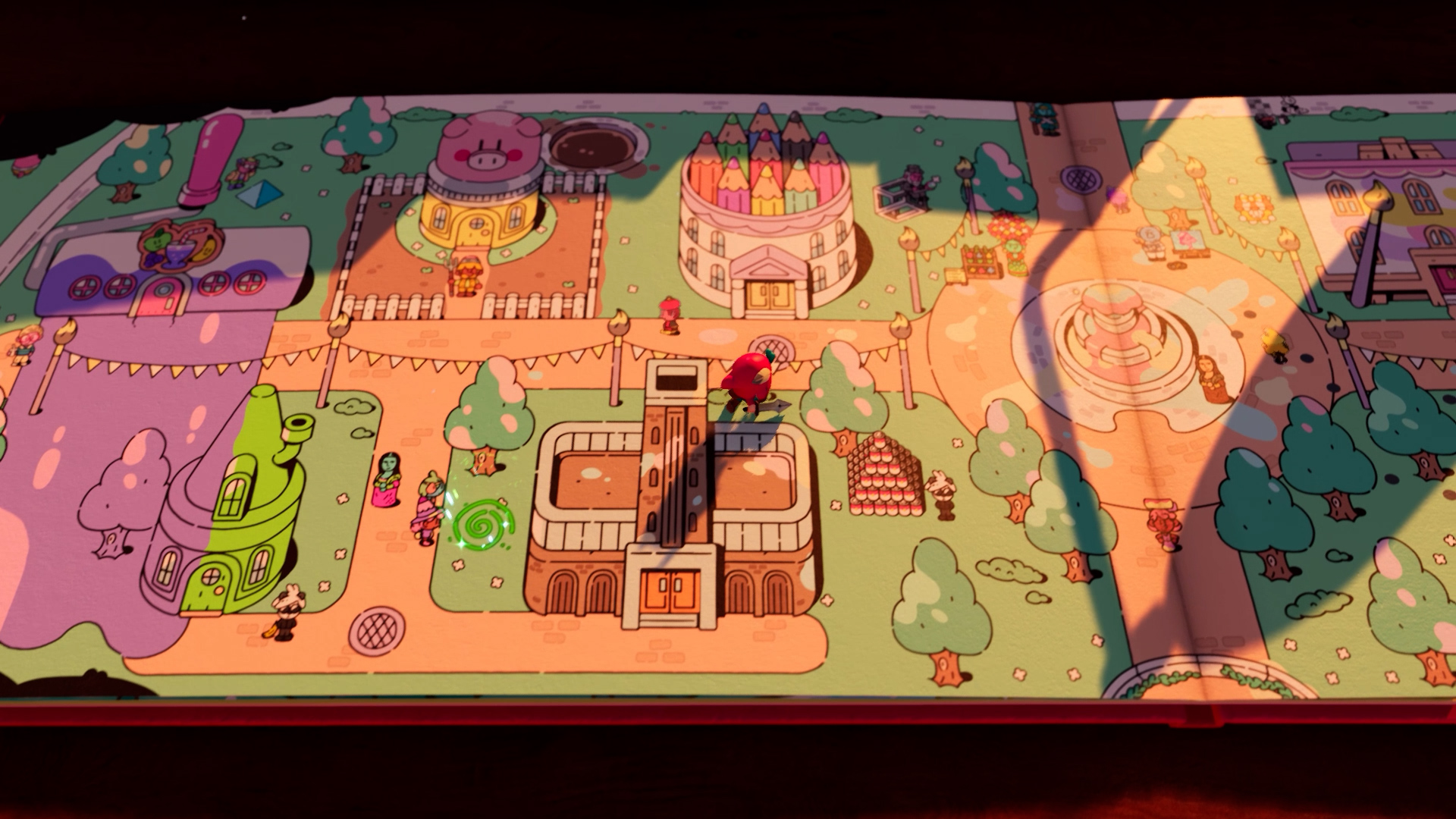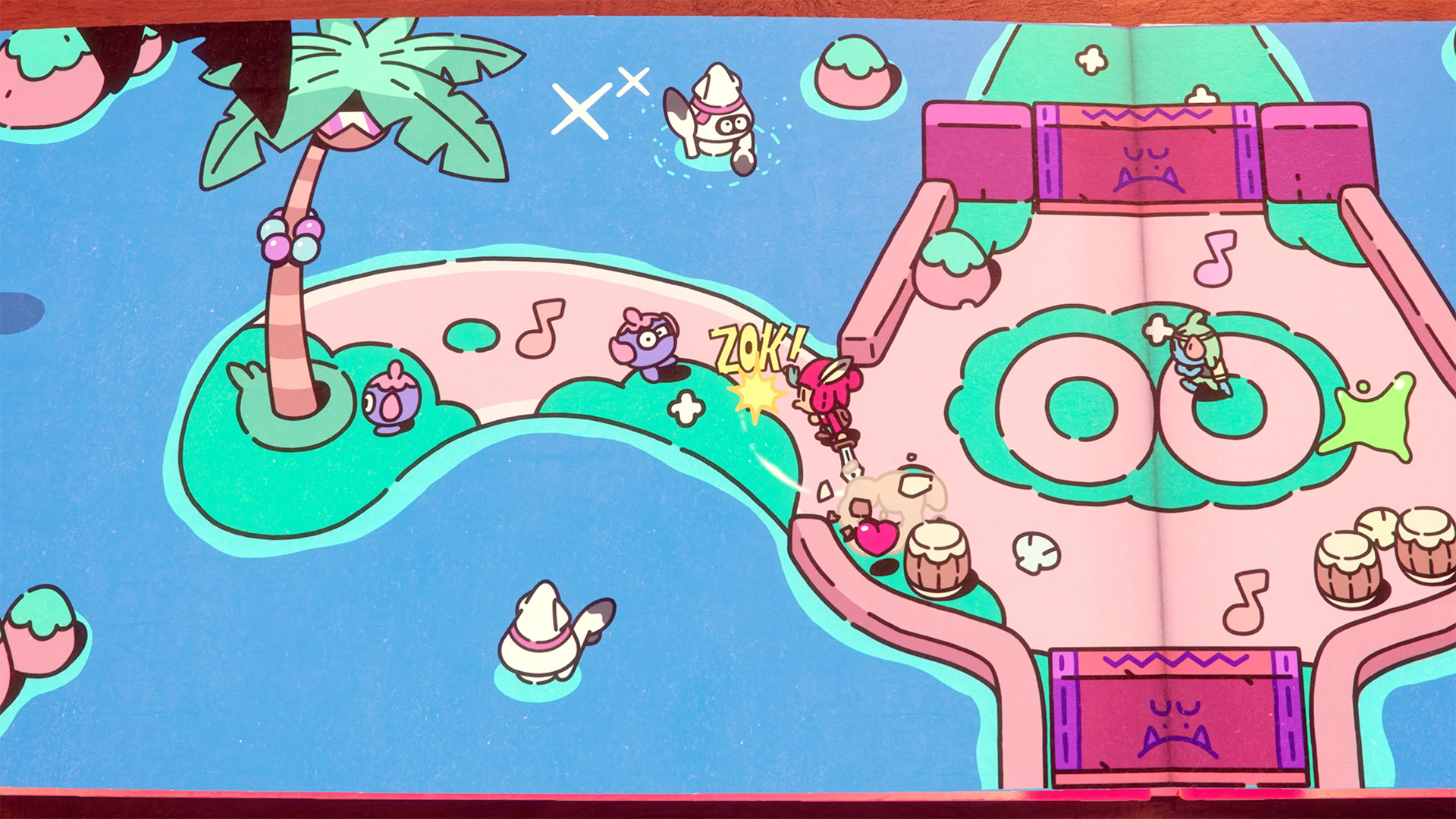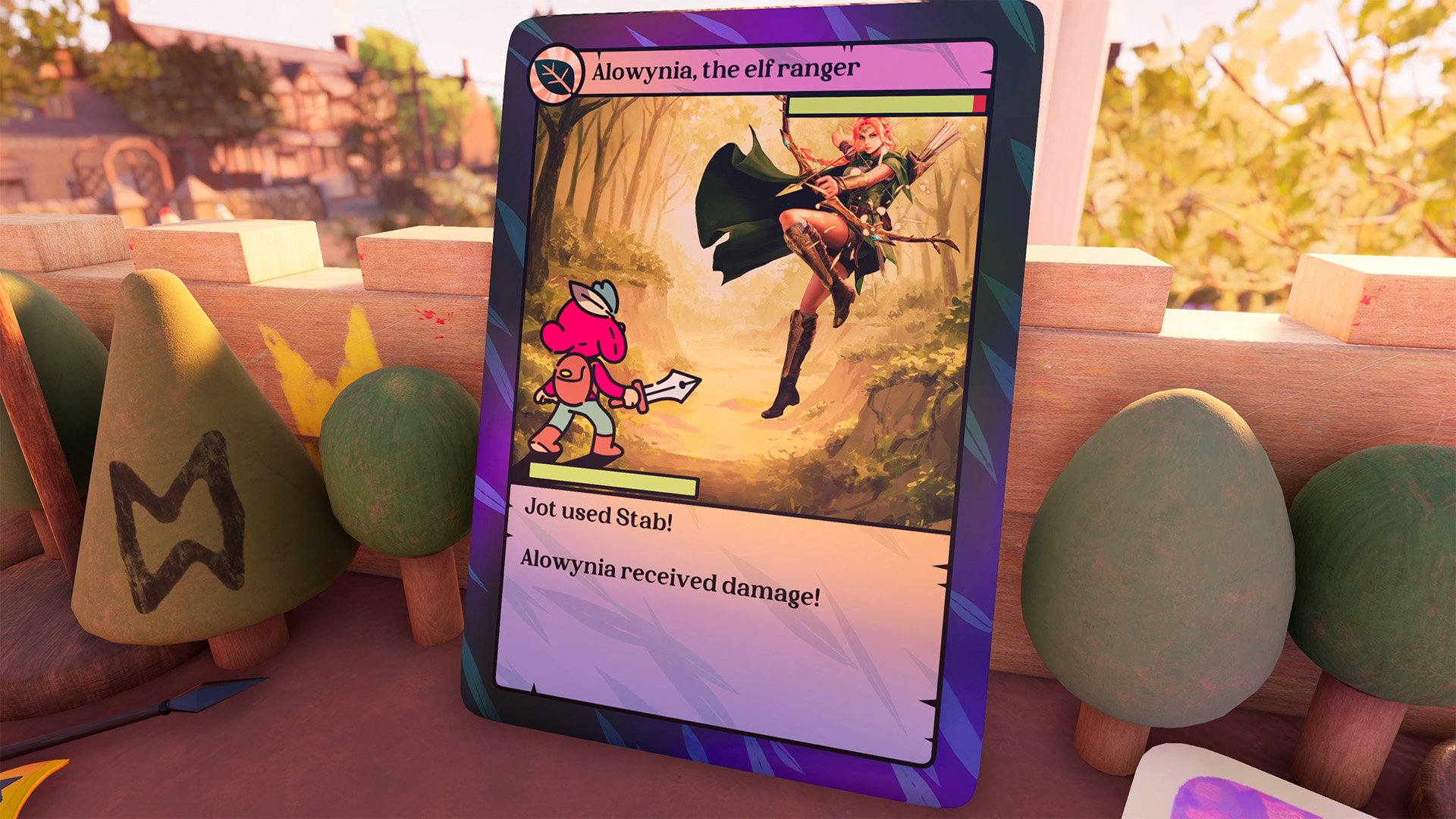
In The Plucky Squire, an all-ages adventure about a swashbuckling hero who steps out of the pages of his storybook, the currency you collect is not gold but Inspiration, represented by scattered, tinkling light bulbs. Jot, the hero, fights with a sword shaped like the nib of a fountain pen as he battles to stop the evil wizard Humgrump — who has just become aware he lives in a fiction, and is the villain of the story — from expelling Jot from the narrative using his “meta-magic” and condemning their book to irrelevance. If there’s no hero, the book will gather dust on a shelf, and inspire no more young minds like that of Sam, the book owner and Plucky Squire fan into whose cluttered room Jot sometimes emerges.
And how does Jot spend the Inspiration he collects? Upgrading his sword attacks. It’s a notably uninspired choice, and, unfortunately, a typical one in a game that explores a charming and inventive premise with plodding, workmanlike, linear, video game logic. The Plucky Squire buys into the inspirational power of children’s literature with well-meaning, sentimental intensity. But developer All Possible Futures doesn’t seem so interested in video games as vehicles for ideas themselves.

Perhaps it’s more accurate to say that the designers seem to have found it difficult to create interesting applications for the ideas that they do have. The Plucky Squire frequently presents novel, perception-bending, fourth-wall breaking concepts. For example, Jot can pick up and swap words on the page, changing the meaning of sentences and the context of the story; a “huge” obstacle becomes “tiny,” a “flooded” area is “drained,” and so on. Elsewhere, Jot can step out of the book and tilt it to move things around, or flip back a few pages to jump around his own story in time and space.
These are great ideas, truly, and they’re begging to be applied in ingenious ways. And yet The Plucky Squire consistently puts guardrails around their use and fails to develop them. Each becomes just one more tool to fit into the sequence of the game’s strictly delineated, cause-and-effect puzzles. These puzzles can take some working out, but even the most involved ones rarely surprise or delight; they’re mostly a case of spotting prompts and figuring out the order in which to fulfill them. Eventually, the tools themselves start to run out of inspirational steam. A lock stamp that can be applied to the page to hold an item in place and time, while everything else moves around it, seems to have potential; the next stamp Jot receives is a bomb stamp that just blows things up.
This isn’t how The Plucky Squire feels to play at first. Adventuring on the pages of his book, Jot is a jolly hero, with crisp attacks and a swift dodge roll for use in the precise, fast-paced 2D combat. He and his friends (including Thrash, a very metal rock troll, and Moonbeard, a DJ wizard in wraparound shades) and enemies (bugs, boxing badgers, plump little Goomba-shaped goblins) are charmingly drawn and animated in a clean-lined illustration style, colored in vivid pastels. It’s fun to bring the pages of a book to life — fun enough that the second or two of interruption as Jot wanders from one page to the next, and the page flips over, isn’t too annoying.

The moment The Plucky Squire starts to feel flat is, ironically, the moment Jot first pops up into full 3D. This transition is the dazzling centerpiece of the game’s trailers, as the plucky squire jumps through a swirling portal and explores the surface of the desk the book rests on, cluttered with paperclips, paint pots, toys, and sticky notes scrawled with illustrations Jot can jump into. At one remove it looks great, and technically it’s an impressively slick transition. But, controller in hand, you can’t escape the sensation of stepping from a bespoke, unique, and vibrant world into a generic 3D video game engine.
All Possible Futures has done its best to bring Jot’s full moveset over into 3D, but the timing and hit detection are fractionally off, and the combat and movement feel sloppier, less impactful, and less real. Sure, Jot is supposed to be a fish out of water in this world — but still, if you’re trying to sell the illusion of a living illustration experiencing tactile reality for the first time, the bland weightlessness of The Plucky Squire’s 3D sections is the last thing you want.
Occasionally, the designers conjure moments of impish magic from Jot’s adventures in Sam’s room — such as when he steps from the desk into a pile of scattered puzzle pieces and must find a way to navigate this non-sequential maze, or when he enters a Magic The Gathering-style trading card to battle its elfin heroine for the prize of her bow. Mostly, these sections involve interchangeable 2D-and-3D platforming that is disappointingly rote in its design, never exploring the dimensional transitions with the playfulness and cunning of, say, Link’s adventures in wallpaper in The Legend of Zelda: A Link Between Worlds.

The Plucky Squire quickly settles into an episodic rhythm. Each chapter sees Jot and friends explore a new locale in the book, hopping out of it occasionally to solve puzzles or to seek a new power-up. Climactic battles in the book sometimes take the form of simple, rhythmic minigames, in which the cherubic little Jot amusingly acquires a ripped physique. Throughout the game, All Possible Futures’ sense of humor comes across better in the lively art than in the sometimes smarmy writing, but it’s a pleasant world to explore, especially with kids.
To an extent, The Plucky Squire is a victim of bad timing. It comes out sandwiched between Astro Bot and The Legend of Zelda: Echoes of Wisdom: two games working in adjacent, family-friendly spaces, also bringing toylike worlds to life, and seeking to disrupt their own design with inventive powers and gadgets. Astro Bot is carefully authored, presenting the player with a straightforward but dense parade of beautifully finessed interactive inventions; Echoes of Wisdom, by initial accounts, gives players the freedom to use its tools to solve challenges in a dizzying number of ways.
The Plucky Squire can’t compete on either count. It’s a fantastic concept but a lackluster design that neither surprises players nor meaningfully empowers them. It’s a classic example of a game that must have made for a thrilling half-hour demo at the pitching stage, but that never quite found itself in production. For all its borderline-smug jollity and borderline-twee sense of wonder, and for all the careful craft and evident effort that went into its making, it lacks inspiration in itself, and engenders none in the player. The light bulb is there, but it never pops on.
